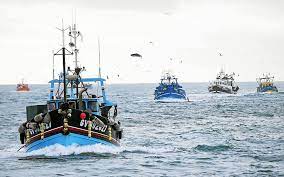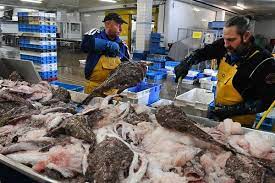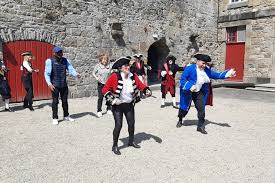REGION BRETAGNE
|
THE SEA EVERYWHERE With its 2,700 km of coastline, Brittany sometimes appears like an island in the middle of the waves... even if it is still very widely connected to the rest of France! Nevertheless, its coastline is teeming with charming or grandiose scenery, to be discovered or rediscovered constantly, like this Vieille lighthouse, off the coast of Pointe du Raz, which one would think is ready to be swallowed up by the powerful waves. But it’s Breton, and it’s solid… BRETON PORTS Brittany has 5 commercial ports: Saint-Malo, Saint-Brieuc–Le Légué, Lorient, Roscoff-Bloscon and Brest, offering a complete range of local logistics solutions and connected to the rail network. Daily rail connections serve Brittany, either via the Rennes terminal combined rail/road transport platform, or via full trains which arrive directly at Breton manufacturers. |
 |
The Breton fishing industry is one of the largest in Europe with nearly 6,000 fishermen, shore fishermen, shore algae harvesters and marine breeders. Its fishing fleets operate on the main European seas and even in the Pacific with oceanic tuna boats. |
SAINT MALO - "VILLE CORSAIRE"
|
Listen to ME A corsair city set with ramparts, Saint-Malo is the maritime city par excellence. Starting point for prestigious races, marina, seaside resort, it combines the advantages of the seaside with the richness of its exceptional heritage Saint-Malo owes its name to the Welsh monk Mac Low who, around the 6th century, became bishop of Alet, the ancient cradle of the current city founded in the middle of the 12th century. At the end of the 15th century, Anne of Brittany annexed the Duchy of Brittany to the Kingdom of France; from the 16th century, Jacques Cartier doubled the route to Newfoundland and discovered Canada. Thanks to its navigators and merchants who shipped ships to India, China, Africa and the Americas, the city's prosperity was prodigious in the 17th and 18th centuries. The privateers, Duguay-Trouin and Surcouf gave it considerable prestige. The fighting of 1944 devastated the port and destroyed 80% of the intra-muros. If the reconstruction has restored its legendary silhouette, Saint-Malo, a historic city of maritime splendor, has since acquired the essential equipment for one of the highest tourist attractions in Brittany and the leading port on its northern coast. On October 26, 1967, Saint-Malo intramuros, Saint-Servan, Paramé and Rothéneuf merged: this was the birth of Greater Saint-Malo. The interest of the historic town is then coupled with a very rich environment:
|
BEST DESTINATION
 Rennes
Rennes Saint Malo
Saint Malo LA FORÊT DE BROCÉLIANDE
LA FORÊT DE BROCÉLIANDE FOUGÈRES
FOUGÈRES PLOUMANAC’H
PLOUMANAC’H BELLE-ÎLE-EN-MER
BELLE-ÎLE-EN-MER Carnac
Carnac DINAN
DINAN
TO VISIT ABSOLUTLY
 Le Château De Brest
Le Château De Brest Le Château De Fougères
Le Château De Fougères Le Domaine De Suscinio
Le Domaine De Suscinio Le Château Du Nessay
Le Château Du Nessay-
 Le Château De Montmuran
Le Château De Montmuran -
 Le Château Des Rohan
Le Château Des Rohan -
 Le Château Le Rocher Portail
Le Château Le Rocher Portail -
 Le Château De Bienassis
Le Château De Bienassis -
 Le Château Du Taureau
Le Château Du Taureau

- The Château du Taureau is another castle restored and enlarged by Vauban. Formerly dedicated to maritime defense, the Château du Taureau is today a wonderful opportunity for a change of scenery in the bay of Morlaix.
ppellation.











 .
.